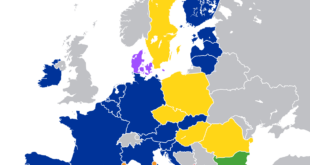- The New York-headquartered International Business Machines Corp. (IBM) became the latest to join the list of tech companies that have made large-scale layoffs since late 2022.
- The company said it would be laying off about 3,900 employees. This comes on the heels of what has been described as Big Tech’s “midlife crisis” or the clock striking “midnight” on its hyper-growth; technology giants Alphabet, Amazon, Meta, and Microsoft have announced the slashing of thousands from their workforce in the last couple of months.
Who has made layoffs?
- In 2022, the tech sector shed more than 1,50,000 employees, with several more job cuts (over 40,000) being announced since the start of the new year. Four of the biggest tech companies in the U.S.— Google-parent Alphabet, Amazon, Microsoft, and Facebook-owner Meta accounted for 51,000 of the total tech layoffs announced in the last few months. According to consulting firm Challenger, Gray & Christmas Inc., tech sector layoffs in 2022 were up 649% compared to the previous year.
- Facebook-owner Meta Platforms Inc. announced in November last year that it cut more than 11,000 jobs or 13% of its workforce. The mass layoffs were the first of their kind in Meta’s 18 years of operation.
- The Bill Gates-founded tech corporation, Microsoft headquartered in Washington announced that it would cut 10,000 jobs or less than 5% of its headcount by March 2023, taking a $1.2 billion charge to its earnings.
- Likewise, in early January, e-commerce, cloud computing, and streaming giant Amazon and America’s second-largest private employer after Walmart, said it would cut 18,000 jobs or 6% of its workforce in company-wide layoffs.
- Alphabet, the parent company of Google, said on January 20 in a staff memo by boss Sundar Pichai, that it would be cutting 12,000 jobs or 6% of its workforce.
- Similarly, music streaming platform Spotify’s CEO Daniel Ek disclosed in an all-staff memo that the company would cut 6% of its global workforce, laying off approximately 600 people.
- San Francisco-headquartered tech company Salesforce announced on January 4 that it was laying off 10% of its jobs and closing down some offices.
- Following Tesla CEO Elon Musk’s $44 billion takeover, social media company Twitter Inc. made aggressive job cuts, laying off half of its workforce or about 3,700 employees in various departments like communications, content curation, product, and engineering.
- Additionally, networking and collaboration solutions firm Cisco said in November that it would lay off 5% of its workforce as part of a restructuring. Computer maker HP also said it would cut up to 6,000 jobs by the end of the fiscal year 2025.
Do they affect Indian professionals?
- As per some industry insiders, between 30% to 40% of those laid off are Indian IT professionals, a significant number of whom are on H-1B and L1 visas.
- The H-1B visa is a non-immigrant visa that allows U.S. companies to employ foreign workers in special occupations that require theoretical or technical expertise.
- Technology companies depend on it to hire tens of thousands of employees each year from countries like India and China.
- A sizeable number of them are now scrambling for options to stay in the U.S. in order to find a new job before their work visas expire.
How huge are these Big Tech layoffs?
- The advent of the coronavirus pandemic brought along rapid growth for the tech sector as work became increasingly remote, e-commerce grew amid lockdowns across the world, and housebound people spent more and more time online.
- Riding on the accelerating growth, Big Tech companies and even some small ones went on a hiring spree from the start of the pandemic.
- Case in point are four of America’s biggest technology companies. Amazon’s headcount increased from 7,98,000 in 2019 to a whopping 15,44,000 in 2022, before the recent layoffs, doubling its employee base.
- During the same period, Microsoft went from 1,44,000 employees to 2,21,000. Sundar Pichai-headed Google parent Alphabet went from a headcount of 1,18,899 to 1,86,779. Mark Zuckerberg’s Meta, meanwhile, more than doubled its headcount, from close to 45,000 to over 87,000.
- Analysts are near-unanimous in saying that big tech companies are “rightsizing” their growth, instead of downsizing, as pointed out to NPR by Columbia Business School professor Daniel Klum. An analysis by The Washington Post notes that tech companies who hired aggressively in the pandemic, probably envisioning rapid growth to be the “new normal”, are now trying to shrink headcounts back to where they would have been if not for the hyper-growth offered by the pandemic.
- This was evident in the introspective notes struck by company CEOs while announcing layoffs, with a lot of them admitting that they might have over-hired. Apple, which hired modestly in the last couple of years, remains an outlier, and has held off on job cuts so far.
- Twitter, meanwhile, saw layoffs in the aftermath of Mr. Musk’s turbulent takeover, who was certain that the platform could run without half of its earlier workforce.
- Meta CEO, Mr. Zuckerberg who doubled his workforce in the pandemic years, for instance, said he was wrong to assess that revenue gains during that period were “permanent acceleration”.
- He said in a message to employees: “Not only has online commerce returned to prior trends, but the macroeconomic downturn, increased competition, and ads signal loss have caused our revenue to be much lower than I’d expected. I got this wrong, and I take responsibility for that.”
- Similarly, Alphabet and Google CEO Sundar Pichai said on January 20, “Over the past two years we’ve seen periods of dramatic growth.
- To match and fuel that growth, we hired for a different economic reality than the one we face today”. Amazon CEO Andy Jassy said in a public staff note on January 5, that this time around, annual planning had “been more difficult given the uncertain economy and that we’ve hired rapidly over the last several years”.
- Notably, despite the layoffs being larger in number, The New York Times pointed out how they only reverse a fraction of the pandemic hiring by these companies.
- A Reuters analysis showed that even if all tech firms were to cut 5% of their workforce, tech employment would still be at 4.2 million (nearly 5% larger than it was at the end of 2019).
Do the layoffs signify trouble for the tech industry?
- Growth has indeed slowed down from pandemic levels, as pointed out by the CEOs. Analysts also project that the five Big Tech companies, including Apple, are headed to report dismal profits for the October to December (2022) period.
- A Reuters analysis states that Amazon is expected to report that earnings fell 38% and that revenue growth is at its slowest pace in more than 22 years. Meta, meanwhile, could take a steep 42% plunge in profits.
- Nonetheless, these tech companies, still remain huge and profitable. Microsoft reported a more than $16 billion profit in the quarter ending December 2022, compared to a profit of about $11.6 billion in the same period in 2019.
- Meta, while reporting a 52% decline from a year earlier, earned a profit of $4.4 billion in the quarter ending September 2022.
- Besides, analysts like Sam Abuelsamid of Guidehouse Insights, told NPR that the job cuts are a form of belt-tightening “meant to send a message to shareholders at a time when tech companies have seen their stock prices plunge”.
- Alphabet’s shares, for instance, had fallen 30% in the past 12 months, in the backdrop of an overall 24% slump in the larger tech industry.
- Abuelsamid said the firms were showing investors that they are “being prudent’, and want to come back to a growth path after overzealous spending.
- This was reflected in Mr. Pichai’s remarks that it was time for the company to “sharpen its focus”, reengineer its cost base and direct talent and capital to its “highest priorities”.
- Meta is also looking to rein in costs after its metaverse investments failed to gather steam.
- Moreover, these companies have also made significant investments in the recent past, especially in Artificial Intelligence-driven tech.
- For instance, while cloud revenues have seen a dip, Microsoft is eying an extension to its $1-billion stake in OpenAI, the startup behind the viral new chatbot ChatGPT.
- It also looking to acquire video game firm Activision Blizzard, which would then bring along a 10,000-strong workforce.
- Smaller startups, meanwhile, who also capitalised on the pandemic digital boom, are trying to rein in costs while facing reluctance from venture capitalists to bet on their projects.
What do the layoffs say about the larger U.S. job market?
- Notably, while the tech sector is seeing job cuts, labour department data shows the larger U.S. job market is still robust, with the number of Americans filing new claims for unemployment benefits falling.
- Economist Jennifer Lee told Bloomberg that the tech layoffs are not a “bellwether of the entire labour market”.
- Analysts point out that tech companies represent about 2% of all employment in the country, compared to larger sectors which are still hiring.
- The labour market has remained resilient despite the Fed’s aggressive measures to bring down inflation.
SOURCE: THE HINDU, THE ECONOMIC TIMES, PIB
 Chinmaya IAS Academy – Current Affairs Chinmaya IAS Academy – Current Affairs
Chinmaya IAS Academy – Current Affairs Chinmaya IAS Academy – Current Affairs



